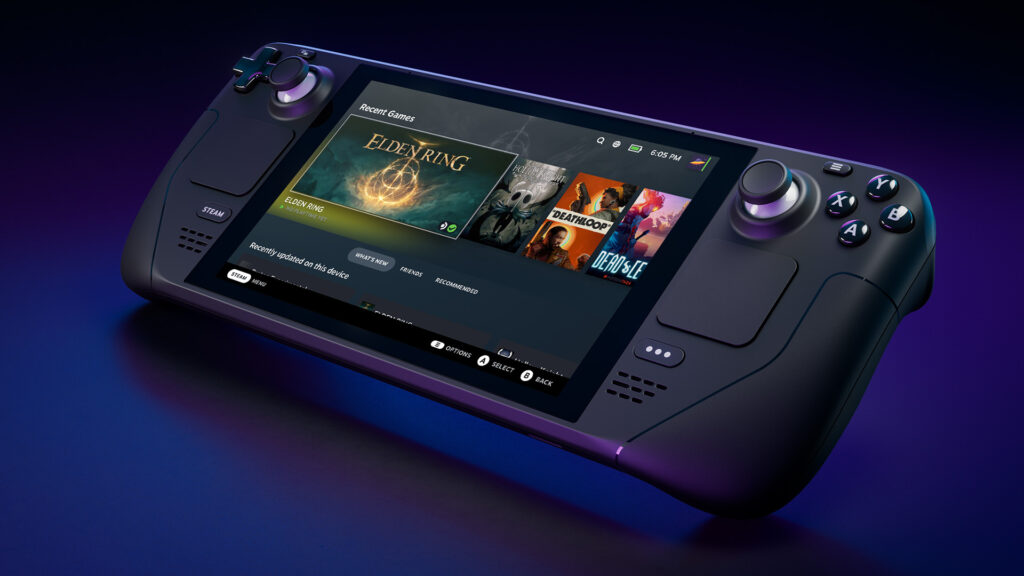What are the best Steam Deck alternatives, and what makes them worth considering instead of the Steam Deck? And once we’ve covered the best alternatives, does the Steam Deck still stand on its own as a viable option, or does it get washed away by the waves of competition? Stick around to find out.
Establishing The Strengths of The Steam Deck
Before I start going over the alternatives, let’s talk about a few compelling strengths of the Steam Deck that make it such a standout. Alternatively, you can go ahead and skip down to the competitor’s reviews or anywhere else in the article with the Table of Contents below.
Table of Contents
Pricing
Let’s start with the Steam Deck’s strongest asset: its pricing, especially for the base $399 model. This is a price point that only Nintendo, a proper gaming console manufacturer, can compete with, and not while providing anywhere near the same level of horsepower.
So, what makes the Deck’s pricing possible despite its industry-leading handheld gaming performance? The fact that it’s backed by Valve and the Steam storefront. As long as Valve gets people buying games on Steam with their entry-level Steam Deck model, they will turn a profit.
In a way, this is how console manufacturers do business, too. Console manufacturers receive a cut from online games brought from their storefronts, and they also get a percentage of physical sales, too. This model is forced on consoles in order to keep their business models intact, but on Steam Deck, you could theoretically not use Steam at all, buy all games elsewhere, and turn it into your own personal handheld PC.
CPU and GPU Horsepower
The raw CPU and GPU horsepower of the Steam Deck, especially when compared to its closest price competitor in the Nintendo Switch, is absolutely outstanding for its price. When the Deck launched, similar handheld PC gaming devices with similar performance already existed…but retailed for over $1000, absolutely decimating both Nintendo and the main competition in terms of price-per-performance on launch.
The Steam Deck has some limitations, but is roughly as capable as a PlayStation 4 at its native 720p/800p resolution, and can push games at equivalent or better settings than the PS4 at that setting. Even Elden Ring can be made to run at a stable 40 FPS on Steam Deck, which isn’t happening on consoles— or even many Windows PCs, due to Deck’s unique shader pre-caching system.
Portability
While the Steam Deck is noticeably larger than any version of the Nintendo Switch, it’s also much more comfortable to hold in the hands for extended play sessions due to its sizable, comfortable handles. As good as Nintendo is with handhelds, there is an entire secondhand market dedicated to more comfortable-to-hold Joy-Cons for the Switch for a good reason.
Steam OS and Proton
Finally, let’s take a moment to talk about the Steam Deck’s “secret sauce” compared to other handheld gaming PCs running Windows.
While not having Windows does result in some performance and compatibility issues, most of that ground is covered by the benefits of Steam OS. Steam OS and its Proton compatibility layer make the majority of Windows games playable on Steam Deck with only marginal performance loss, which is huge for a limited power handheld like this.
How Steam Deck Alternatives May Differ
So, what are the main ways you can expect Steam Deck alternatives to differ?
The biggest discrepancy will be in pricing. Besides Nintendo’s offerings, all viable Steam Deck competitors are considerably more expensive than the base model Steam Deck, and the ones that are actually more powerful than the Deck can easily start breaching the $1000 price point.
Besides that, most of these devices will be using Windows instead of Steam OS. While this is perfectly fine for game performance and compatibility, it does draw concerns for battery life without Deck’s extensive battery life optimization options, as well as the general handheld experience.
With these points established, let’s move onto our selections!
Sidenote: Some options highlighted in this article are currently only available in the forms of limited testing or pre-orders. For unreleased devices, I’m sticking with reputable manufacturers with Steam Deck-competitive specifications.
I’m especially favoring devices that use AMD’s latest Ryzen 7 6800U APU, as this is more powerful than the chip inside the Steam Deck. I’ve embedded a video from Taki Udon on YouTube below showing off the performance with this chip on the AYANEO 2.
The Best Steam Deck Alternatives
1. Nintendo Switch OLED
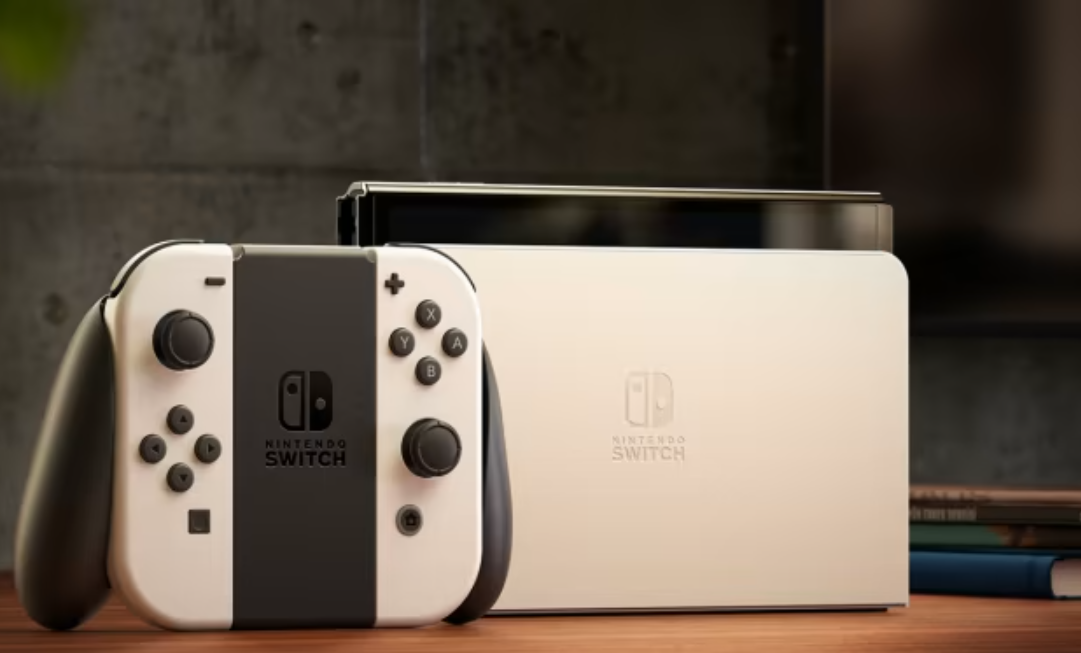
- Price Point: $350
- Screen Size: 7 Inches
- Screen Type: 720p OLED
- Operating System: Nintendo Switch OS
- Internal Storage: 64 GB
- Expandable Storage: SD Cards
- CPU: Custom Nvidia Tegra
- GPU: Custom Nvidia Tegra
- RAM: 4 GB LPDDR4
The Nintendo Switch OLED is an updated revision of the Nintendo Switch. It isn’t more powerful or anything, but it does bring an excellent OLED display to the table, which the Deck does not have. The Switch OLED’s panel plus its competitive pricing and general ease-of-use make it a surprisingly compelling Steam Deck competitor, even if it’s nowhere near the same punching class of hardware.
However, making the Switch does come with its compromises. Being on a locked-down console ecosystem with weak hardware power means that many of the latest games simply won’t be playable, or will be in compromised forms if they are playable on your Switch. Since the OS is locked down, you can also pretty much forget about things like PC usage and games modding with a Switch.
2. AYANEO Air Pro
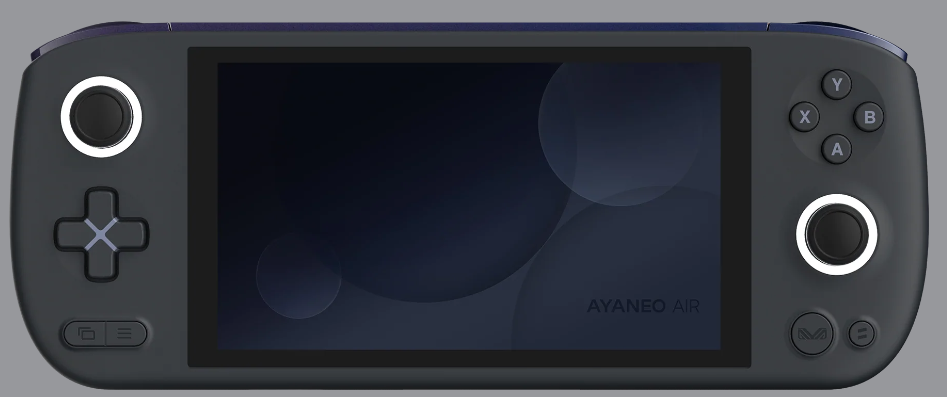
- Price Point: Starts at $650
- Screen Size: 5.5 Inches
- Screen Type: 1080p OLED
- Operating System: Ayaneo OS or Windows or Steam OS
- Internal Storage: 512GB-2TB SSD
- Expandable Storage: SD Cards, External USB When Docked
- CPU: AMD Ryzen 5 5560U (6 Cores, 12 Threads) or AMD Ryzen 7 5825U (8 Cores, 16 Threads)
- GPU: AMD Vega 6 with 6 CUs or AMD Vega 8 with 8 CUs
- RAM: 8GB or 16GB LPDDR4
First, let’s talk about the most compelling Steam Deck competitor in the handheld gaming PC market: the AYANEO Air Pro. The AYANEO Air Pro isn’t quite as powerful as the Steam Deck (especially not the weaker model), but since it’s a PC it’s about as flexible as a Steam Deck is. Paying more for less gaming horsepower does hurt a little bit, but the Air Pro makes up for that in a few key areas.
For one, the screen. Like the Switch OLED, the AYANEO Air Pro offers a gorgeous OLED panel. It actually runs at a higher resolution than the Deck’s, though I wouldn’t recommend pushing native resolution on this device in anything but 2D games and very light 3D games.
Additionally, the AYANEO Air Pro is much smaller than both the Deck and Switch— it’s more like a Switch Lite in form factor, except with much better handles.
If you feel like the Switch and Deck are a little big for handheld devices, the AYANEO Air Pro offers great portability, and is still just as compatible with USB docking stations as the Steam Deck is.
3. Nintendo Switch Lite
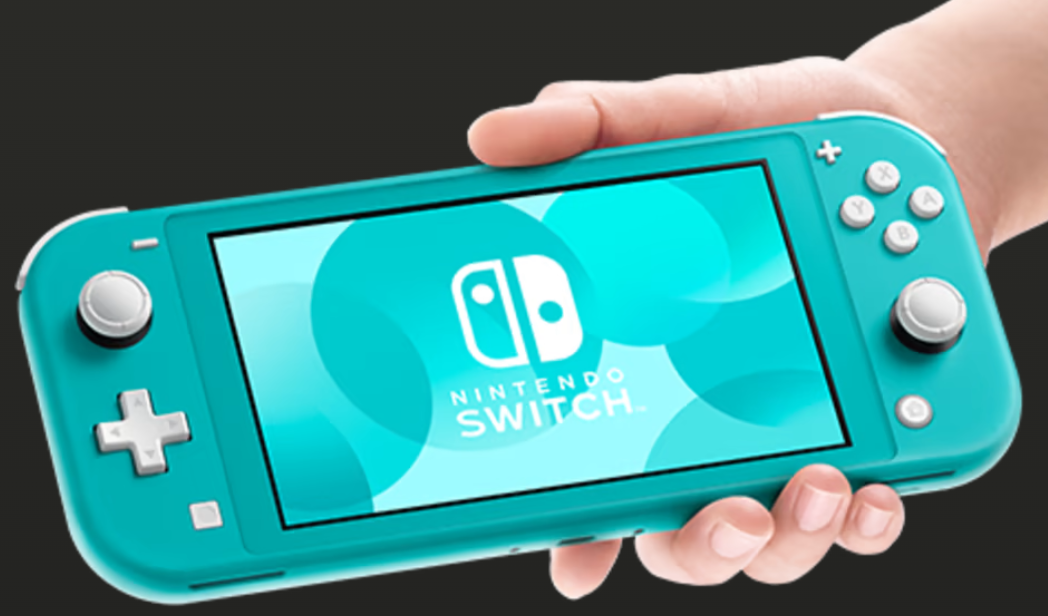
- Price Point: $200
- Screen Size: 5.5 Inches
- Screen Type: 720p LCD
- Operating System: Nintendo Switch OS
- Internal Storage: 32 GB
- Expandable Storage: SD Cards
- CPU: Custom Nvidia Tegra
- GPU: Custom Nvidia Tegra
- RAM: 4 GB LPDDR4
Honestly, I might just consider the most compelling competitor to the Steam Deck, at least if your only goal is to find the best gaming handheld for the money and don’t need PC features. If you have no interest in docked TV or monitor play and you want to save money, the Nintendo Switch Lite is a great choice. For only $200, you get a decently-powerful gaming portable with plenty of developer attention.
Plus, while it isn’t stronger than the regular Switch or Switch OLED, it does benefit from a higher PPI (pixels per inch) thanks to its smaller screen. This can make games look noticeably sharper on the Switch Lite than its bigger brothers, though the downgrade to LCD means it still won’t look quite as good as the Switch OLED’s display.
While the aforementioned Switch downsides still apply here— and a new downside now that you can no longer dock the device— this is still very worthwhile to consider for those in the market for gaming handhelds.
4. AYANEO Geek and AYANEO 2
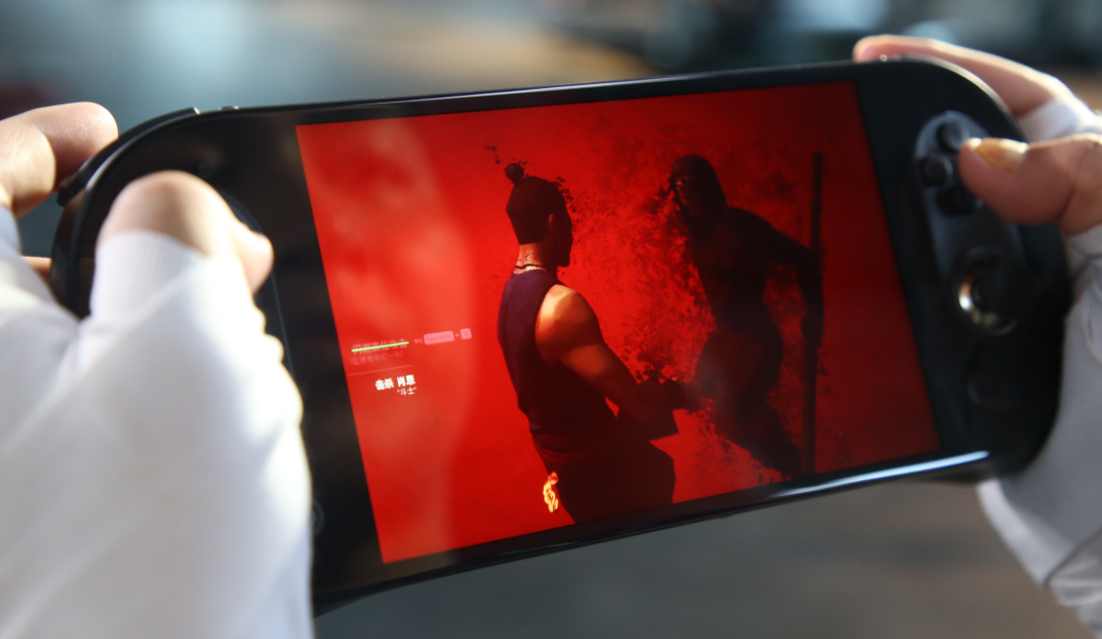
- Price Point: Starts at $949 (Geek); Starts at $1099 (2)
- Screen Size: 7 Inches
- Screen Type: 800p (Geek) or 1200p (2) LCD
- Operating System: Ayaneo OS or Windows or Steam OS
- Internal Storage: 512 GB, 1 TB, or 2 TB SSD
- Expandable Storage: SD Cards, External USB When Docked
- CPU: AMD Ryzen 7 6800U (8 Cores, 16 Threads)
- GPU: AMD Radeon 680M
- RAM: 16 to 32 GB LPDDR5
The AYANEO Geek and AYANEO 2 are upcoming handhelds from AYANEO boasting the latest and greatest AMD APU, enabling better-than-Steam-Deck performance (roughly ~20-30%) in the same form factor. I’m combining the two devices in this piece, since the Geek is meant to be a slightly more price-competitive version of the 2, but they have virtually the same specifications.
AYANEO is currently one of Valve’s strongest competitors in the handheld gaming PC space, and preliminary impressions of both the AYANEO Geek and AYANEO 2 are looking fairly promising. While the pricing is an undeniable sour spot of these devices compared to the Steam Deck, actually providing better gaming performance will be a key advantage for these devices when they release.
Also, while the 2 is ostensibly better, I would recommend sticking to the 800p Geek model. While some games may be able to get pushed at 1200p on this APU, 800p will still look fairly sharp and be a much easier native resolution target to meet in your games.
5. GPD Win Max 2
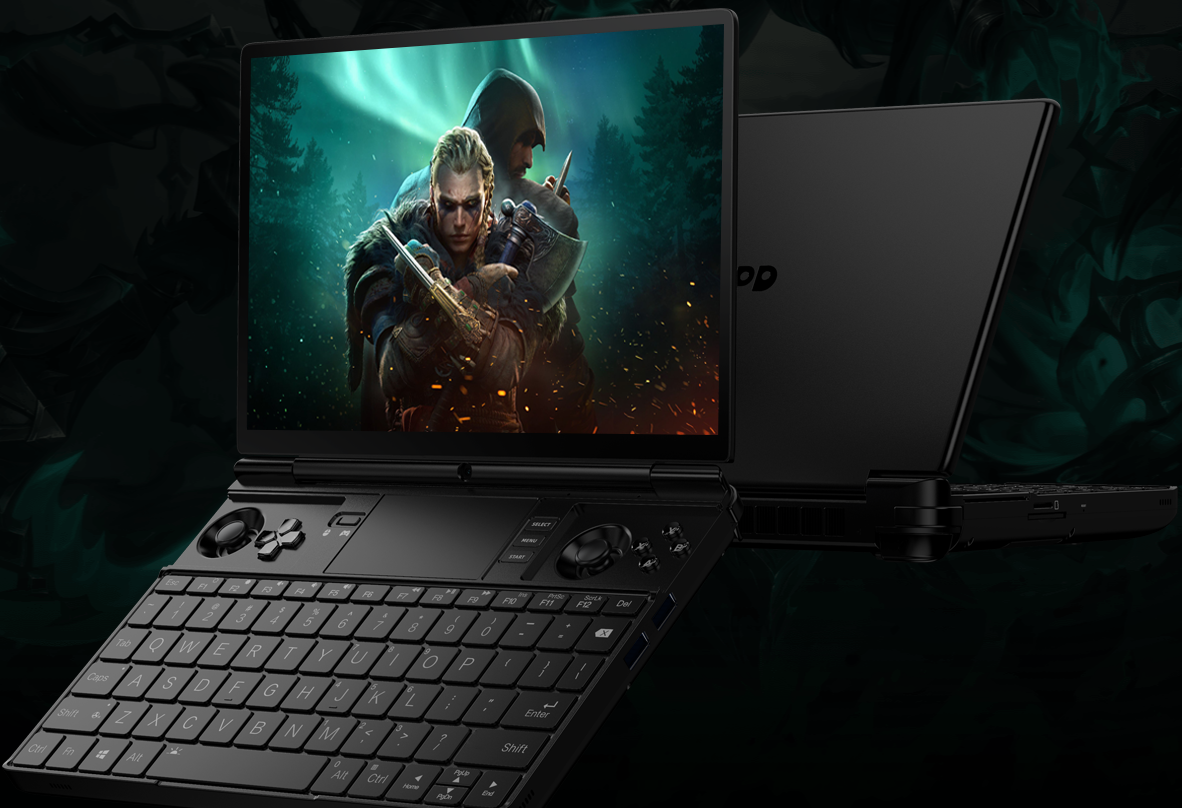
- Price Point: Starts at $999
- Screen Size: 10.1 Inches
- Screen Type: 1600p IPS
- Operating System: Windows or Steam OS
- Internal Storage: 1 TB or 2 TB NVMe SSD
- Expandable Storage: SD Cards, External USB When Docked
- CPU: Intel Core i7-1260P (4 P-Cores, 8 E-Cores, 16 Threads) or Ryzen 7 6800U (8 Cores, 16 Threads)
- GPU: Intel Iris Xe Graphics or AMD Radeon 680M
- RAM: 16 GB or 32 GB LPDDR5
Another great competitor in the handheld gaming PC space is GPD. GPD has been known for their handheld “GPD Win” devices for a while, which have most often been foldable handheld PCs with included gamepad controls. a hardware keyboard, or both.
The GPD Win Max 2 is the current best version of that GPD design philosophy, though it’s also much larger than its contemporaries, with a screen size of 10.1 inches. This thing’s almost a laptop! With a big, beautiful 1600p IPS screen, a full keyboard, and included gamepad controls, this has pretty much everything you could ask for in a handheld PC.
I would recommend anyone who is interested in this device get the AMD version, as that will provide the best performance. Additionally, while the 1600p IPS screen is excellent, you’ll still most likely want to target most of your games for an 800p resolution. On the bright side, 800p should scale pretty well to a 1600p screen, the same way 720p scales surprisingly well to 1440p.
6. GPD Win 4
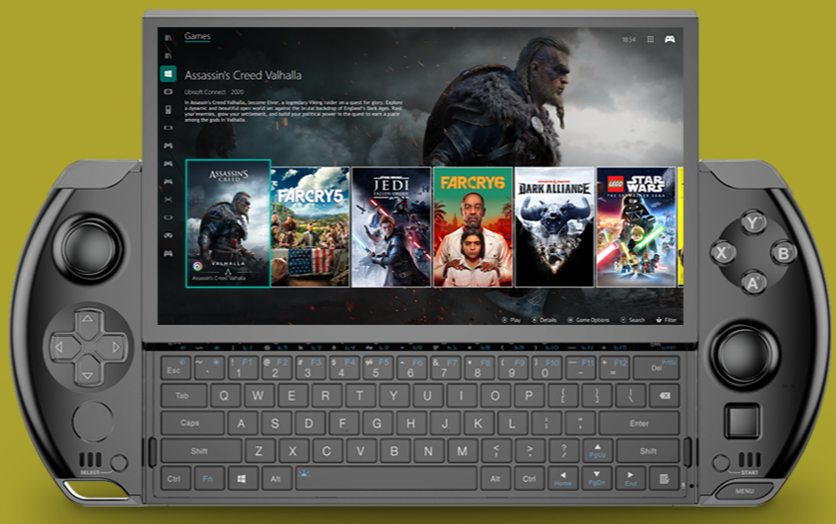
- Price Point: TBA (Expected To Start at $1000 or More)
- Screen Size: 6 Inches
- Screen Type: 1080p IPS
- Operating System: Windows or Steam OS
- Internal Storage: 1 TB or 2 TB SSD
- Expandable Storage: SD Cards, External USB When Docked
- CPU: AMD Ryzen 7 6800U
- GPU: AMD Radeon 680M
- RAM: 16GB or 32GB LPDDR5 RAM
The GPD Win 4 is still too early in development to have a stated price point, so I’m putting it to the bottom of the list by default. However, GPD has a solid track record in the handheld PC space now— moreso than anyone else on this list, actually— so I’m still comfortable recommending the upcoming GPD Win 4 as a good alternative to the Steam Deck.
The GPD Win 4 comes in a form factor that falls somewhere between the Deck and the Switch Lite. It actually looks quite a lot like the PlayStation Vita of old (RIP), but with a sliding screen that reveals a hardware keyboard as well as all the handheld controls you would expect in a current-gen device.
Like the other high-power upcoming devices, the GPD Win 4 boasts that Ryzen 6800U that solidly outperforms the Steam Deck. The resolution bump to 1080p is also a bit more modest and manageable than 1200p, though you may still need to do some FSR image scaling or resolution changes to stabilize performance in the most intensive games.
Besides the AYANEO Geek, this is looking like the strongest upcoming handheld PC competitor to the Steam Deck. I just hope that the price ends up being right. I don’t expect Deck parity in pricing, but if they can at least make around $800 I think GPD Win 4 could dominate the competition.
Why To Still Consider The Steam Deck
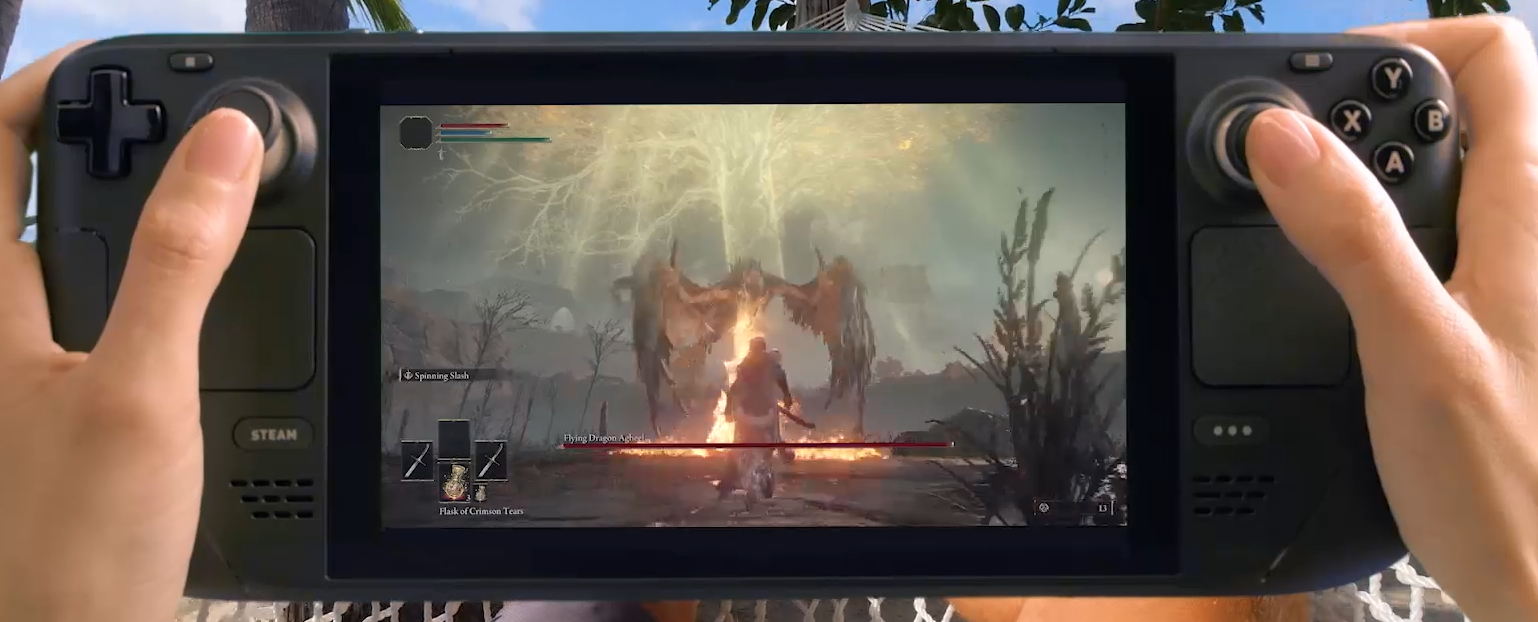
- Price Point: Starts at $399
- Screen Size: 7 Inches
- Screen Type: 800p IPS
- Operating System: Steam OS or Windows
- Internal Storage: 64 GB eMMC (cheapest), 256 GB SSD (midrange), 512 GB SSD (high-end)
- Expandable Storage: SD Cards, External USB When Docked
- CPU: AMD Zen 2-based Custom APU with 4 Cores and 8 Threads, running up to 3.5 GHz
- GPU: AMD RDNA 2-based custom GPU with 8 Compute Units, running up to 1.6 GHz
- RAM: 16 GB LPDDR5
Honestly, I still think the Steam Deck is the best gaming handheld currently available on the market. If we were to strip away all the marketing and look at all the devices competing in this space for what they are— PCs— Steam Deck offers far and away the best balance of pricing and performance. It’s a handheld PlayStation 4 with an untethered Linux operating system that you’re allowed to install pretty much anything you want to on, and the cheapest model is only $400!
It’s hard to overstate just how good the Steam Deck is compared to its competition, but I hope that after reading this article you have an idea of just how difficult it is for other manufacturers to compete with this device. While they have my sympathies— not everyone can sell hardware at a loss and compensate with game sales— Steam Deck is a clear victory for Valve and PC gamers in general, and has earned its spot at the top.
Parting Words
And that’s it, for now!
I hope this article painted a clear picture of the handheld gaming PC market and how the Steam Deck and its competition are faring against each other. For now, it’s mostly a win in the Steam Deck’s favor, because it launched with both a performance and a price advantage.
But now that more powerful devices are making their way to the market, there is plenty of room for disruption. And it’s not like Valve is looking to run a monopoly, since they’re happy to let these other manufacturers run and use Steam OS, too. I hope to keep seeing more powerful handheld gaming PCs at better price points as the years go on.
I’m not sure any of these manufacturers are going to be able to compete AT the Deck’s price point any time soon, and if there are future models of the Deck I imagine it’ll still be able to keep its price down by relying on Steam game sales. However, if these manufacturers stay competitive with their hardware, designs, and general user experience…I’m sure there’s enough at this table for everyone to have a bite.

